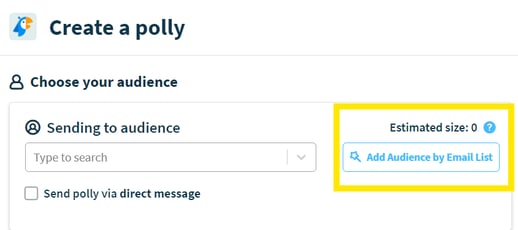Emails have their time and place, but they can be stressful, limit collaboration, and have to fight a lot of noise in the inbox. Research shows that the average knowledge worker spends 28% of their week reading and checking email, dramatically reducing the time available to do meaningful work. And if you’re someone who checks your inbox only once or twice a day, you might be missing key conversations and opportunities to contribute. With the pace of work and the growing trend of distributed workforces, it’s nearly impossible to use email as a timely, effective communication tool. The one thing email excels at—corralling all your conversations in one place—is also what makes it almost impossible to keep up with.
The trick is to find collaboration channels that help you accomplish your goal quickly. Before composing that next email, take a minute to think about what you need from your team and if there isn’t a faster, more efficient way to get the task done.
Five times you should rethink sending that email
1. When you need an answer right away
When you have a work emergency or a tight deadline, it can be disastrous if a key teammate takes a full day to respond to your email. To quickly arrive at your end point, whether that’s a decision or a deliverable, you need a tool that works in real time. Short of tracking somebody down in person, which is increasingly difficult in remote and hybrid workforces, the best solution is often a messaging tool like Slack or Microsoft Teams. For questions that require a little more context, the new Huddle feature in Slack allows you to host an impromptu voice chat with select teammates. When you need a quick approval from your manager, you don’t need to wait several hours for them to check their email. It’s much more efficient to spend five minutes talking and then get on with work.
2. When you want to review or a discuss an ongoing project
When collaborating on a project, the goal should be to continue conversations where they’re already happening. Very rarely is the actual deliverable being created in an email. Whether it’s an upcoming sprint, an article draft, or a presentation, an email thread is generally on a completely different platform than the work. Moving the conversation to email removes context and can create duplicate work when you need to apply changes or make decisions.
Wherever possible, connect the collaboration tool to the work you’re doing. Frequent context switching, like hopping between tasks before you’ve finished the first, can contribute to a 40% decrease in productivity among other detrimental impacts. When email is your primary communication and collaboration tool, you’re forced to continuously context shift, toggling back and forth between email threads and the actual work. Keeping the conversation as close to the deliverable as possible prevents this disconnect. Comment threads in Google Docs are a great example of effective communication, tying together context with the ability to loop in the right people. Most project management tools, like Trello and Asana, also have functionality to thread comments within the project itself.
3. When you need to document a decision
We’ve all been there: You know you got sign-off on a decision, but it’s buried somewhere in your inbox and you can’t find the right email. Version control and record-keeping aren’t glamorous tasks, but they’re a critical component of collaboration. Make sure that, whatever tool you’re using, you’re able to track—and find—the results of your conversations. Many project management tools, like Asana, have native functionality to track approvals that can otherwise get messy in ad hoc conversations.
This is one of the most helpful features of Polly: Every time you send a question out, the results live in your dashboard, no matter what channel you sent the polly to. Asking for feedback or buy-in through a polly makes it easy to track down that information later.
4. When you need to have a discussion
For better or worse, you can’t opt out of an internal email. Thus, we’re all subject to the dreaded reply-all. Before you know it, your inbox is full of one conversation and there’s no polite way to excuse yourself, even if you have nothing to contribute. Taking work discussions out of the inbox and reducing the chances of accidentally alienating potential collaborators helps everybody. Your teammates are able to stay focused on work because they can control their level of participation and you avoid managing the ever-increasing threads of the conversation. Most tools have a way to manage user participation, whether it’s adjusting notification settings or leaving a Slack channel. That way, you can make sure that only the people who are part of the conversation get notified.
Additionally, if you’re trying to build consensus or make sure everybody has had a say, checking email responses is laborious at best. Polly is just one tool that makes it easy to see how many people in your group have responded to a question.
5. When you’ve already sent an email
So, you’ve already sent an email and gotten few or no responses? Instead of replying all (or worse, nudging each person individually), save everybody's inboxes and try a different technique. Messaging apps are usually a good choice, though it can be tough if not everybody is in the same channel. Polly for Slack has a good workaround for this, allowing you to send a polly directly to your audience using a list of emails.

How to succeed without email
The real trick to moving away from email is building a shared set of working norms for how your organization or team will use various collaboration tools. Consider:
- Where is the source of truth for a project?
- How will information be collected and shared?
- What are the expectations around response time?
Creating and maintaining these norms is ongoing work. It helps to limit your options when choosing your collaboration tools. Instead of starting separate threads in JIRA and Trello and Slack and Google Sheets, choose one or two primary channels where decisions and feedback happen. When you kick off a project, in addition to assigning tasks and responsibilities, be clear about where and when you will communicate. Finding the right balance of collaboration tools is a process, so make sure you’re including it in your project retrospectives and team reviews. Polly is a great way to collect feedback at the end of a project with a retrospective template that’s ready to send to your team.
Sometimes you really do have to send an email
There are times when email is still the best channel. For example, email works well when you want to send an update to a large group of people and don’t necessarily need input. Even in this case, it may be most effective to share information on multiple channels, such as Slack and email, to reach the broadest group. Plus, if you’re already working on moving collaborative communications away from email, your teammates’ inboxes will be much less crowded with action items, making it easier for the occasional email to stand out.
If your message doesn’t fit into one of the categories listed above, consider using something other than email. It’s been almost 50 years since email was developed, and it goes without saying that the way we work has changed since then. In the same way that not every conversation needs to be a meeting, not every communication needs to be an email. Try out other tools to see if you can get more participation or faster results with something else. And please, most importantly, stop replying all.
Skip the email, send a polly.

Written by Ellie Henningsgaard
Washington native, gardener, Seattle hockey fan, second-favorite human of Hilde the mini Aussie.







